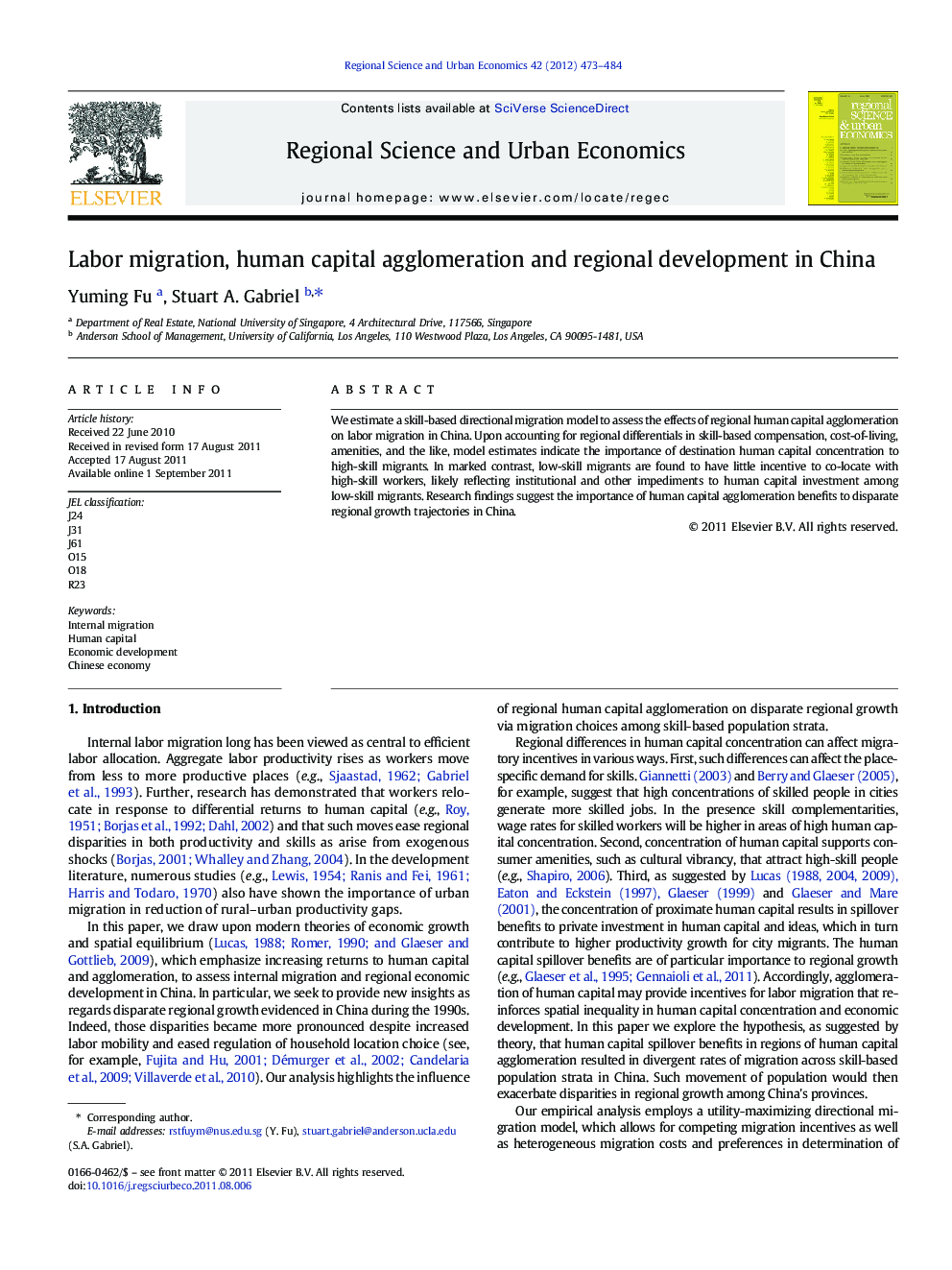| Article ID | Journal | Published Year | Pages | File Type |
|---|---|---|---|---|
| 983760 | Regional Science and Urban Economics | 2012 | 12 Pages |
We estimate a skill-based directional migration model to assess the effects of regional human capital agglomeration on labor migration in China. Upon accounting for regional differentials in skill-based compensation, cost-of-living, amenities, and the like, model estimates indicate the importance of destination human capital concentration to high-skill migrants. In marked contrast, low-skill migrants are found to have little incentive to co-locate with high-skill workers, likely reflecting institutional and other impediments to human capital investment among low-skill migrants. Research findings suggest the importance of human capital agglomeration benefits to disparate regional growth trajectories in China.
► We assess the benefits of regional human capital agglomeration to workers in China through the prism of labor migration. ► We account for regional differentials in skill-based compensation, cost-of-living, amenities, and migration costs. ► Estimates of the directional migration model show important such benefits to high-skill migrants. ► But low-skill migrants are found to have little incentive to co-locate with high-skill workers. ► These results likely reflect institutional and other impediments to human capital investment among low-skill migrants.
